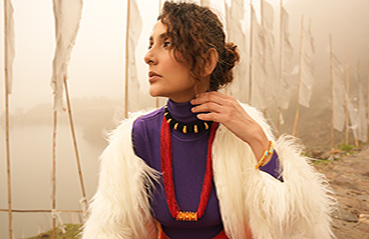Published: 10 Aug 2017
Gold in Tanjore paintings: when art is truly precious

There’s more to golden art than jewellery. Just head down south to the Tanjore district in Tamil Nadu and behold the magnificent ‘Tanjore Paintings’.
What are they?
Tanjore painting is a popular form of artwork that originated in South India. These paintings have been popular from the 16th century and have evolved under the reign of the Chola emperors and are famous for its use of gold. When the Marathas invaded Tanjore in Tamil Nadu many painters and artists migrated here and under their rule, this art form flourished.
This form of painting is distinguished by its use of gold and semi-precious or precious stones which is used to accentuate the design.
Each painting tells a story, usually revolving around Hindu gods, Goddesses or Saints.
In olden days, Tanjore paintings were placed in dark temple shrines by emperors. In a dim place, the gold used to enhance the painting.
How are Tanjore paintings made?
Tanjore paintings are completely handmade and do not employ any machinery.
To make a Tanjore painting, a sketch is first made on a cloth.
This cloth is pasted on a wooden base, historically made from the jackfruit tree. Today, plywood is used as an alternative.
The canvas is evenly coated with Limestone or French chalk and a binding medium.
Once dry, the sketch is outlined with dark brown or black paint and painted using bright colours.
These paintings have intricate brush strokes and graceful figures. The gold adds life and depth to the painting.
Between 2nd century B.C. and 7th century A.D., gold in these paintings helped inspire a feeling of devotion.
In olden days, vegetable or mineral dyes were used in the painting. The colours used were specific to different segments of the painting. For example,
- Backgrounds were usually red or green
- Lord Vishnu was coloured blue and Lord Nataraja was painted white
- The colour yellow was used to paint Goddesses
- The sky was painted blue or black depending on the story
- The clothing and ornaments adorned by Gods and Goddesses were made of pure gold.
Gold, gemstones, pearls, glass beads, and precious stones are embossed over the painting.
This gave the paintings a three-dimensional effect
Usually gold foils are used in these paintings. Sometimes pure gold milk or dust is used as well.
The use of pure gold makes the painting a splendid visual treat. Since gold was widely used, these paintings were considered a treasure.
The shine of these paintings lasts for 80-100 years, as pure gold never fades.
The most-loved theme by Tanjore painters has been the image of baby Krishna, sitting on his golden throne with a pot of butter in his hands. He is elaborately bejewelled and the painting features gold in his jewellery, clothing and the throne.
Forms of Tanjore paintings:
There are multiple forms of Tanjore paintings, specific to respective regions like:
- The Chettinad Tanjore painting
- Originated Tanjore
- Practised since 1600 AD.
- Features bold colours and thick lines
- The Mysore Tanjore painting
- Originated in Mysore
- Features delicate lines, intricate brush strokes and graceful figures of Gods and Goddesses. Bright colours and lustrous gold leaves were also used to enhance these paintings.
Today, the paintings are almost the same, but the materials used have been upgraded to keep up with the modern times. The Tanjore art form exists in various regions with each having their own unique interpretation.
Sources:
Source1, Source2, Source3, Source4, Source5, Source6, Source7, Source8











